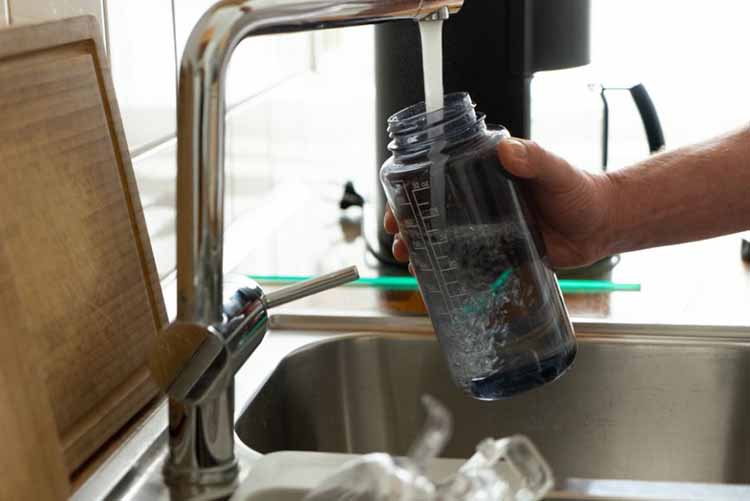If you think it’s difficult to keep your water bottle free from bacteria, mold, and unpleasant odors, trust me, it’s not. There are some easy methods to make your bottle look like a new one after every use. So, how to clean plastic water bottles? How often should you clean your bottle?
In short, you can use white vinegar, baking soda, mild dish soap, dishwasher, and denatured tablets. It’s best to clean your bottle after every use to prevent buildup. You can do deep cleaning once a week.
Keep reading to know all the necessary information in detail including effective techniques and additional tips for cleaning plastic water bottles without damaging the materials.
5 Best Ways to Clean Plastic Water Bottles
Here are 5 best ways to clean plastic water bottles that are enough to make your journey with the water bottle longer.
1. Using White Vinegar
White vinegar is an effective and eco-friendly natural cleaner. Its acidic nature breaks down bacteria, mold, and odors while being safe for everyday use. Cleaning your plastic water bottle with vinegar is an easy way to keep it sanitized and fresh without using harsh chemicals.
Let’s walk you through the steps!
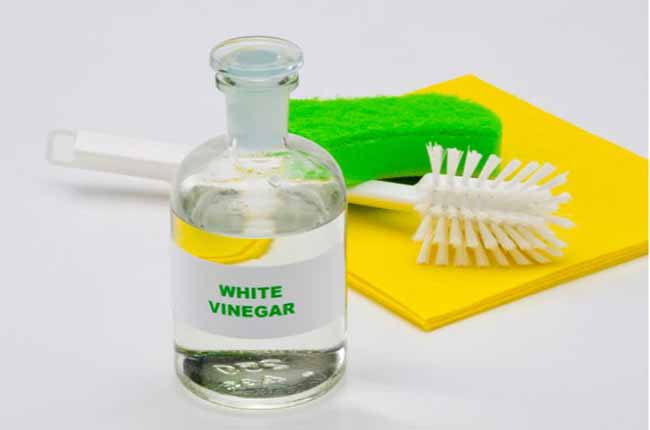
Step 1: Prepare the Cleaning Solution
Fill your bottle with distilled white vinegar about one-fifth of the way. Don’t use apple cider vinegar, as it might leave a residue or smell. After adding vinegar, add warm water until it’s half full.
Pro Tip: Use a bit of the solution on a paper towel to wipe down the bottle’s exterior and rim where your mouth touches.
Step 2: Shake and Soak
Now, secure the lid firmly and shake the bottle for around 30 seconds. Don’t skip this part, as it ensures that the solution covers the entire inside of the bottle. Once shaken, let the bottle sit overnight. The vinegar needs time to sanitize the bottle thoroughly and dissolve any lingering buildup.
Step 3 Rinse and Dry
The next morning, empty the bottle and rinse it out with warm, clean water. Ensure that you rinse away every bit of the vinegar solution completely. To dry, either use a towel or let the bottle air dry with the lid off.
If you notice any stubborn spots, grab a bottle brush and scrub them off. Or you can use a toothbrush instead. Don’t forget to clean the lid, mouthpiece, or reusable straw using the vinegar solution. A pipe cleaner or straw brush works great for hard-to-reach places.
2. Using Dish Soap and Water
Dish soap is a household essential that works wonders for cleaning. It breaks down grease and grime to remove dirt and bacteria in your plastic water bottle. Below are the details of how it works.
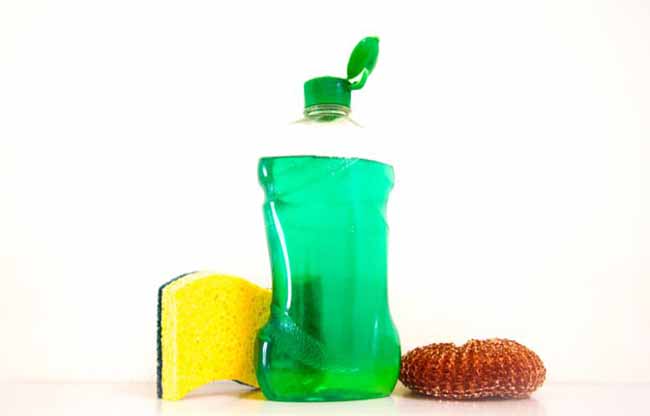
Step 1: Mix the Cleaning Solution
Fill your bottle about halfway with warm water. Add 3–5 drops of mild dish soap. Try to use unscented dish soap to avoid any clingy flavours in your bottle. Close the lid securely so you can mix the solution without spills.
Tip: Make this a daily habit if you take your bottle to places like the gym or school, where there’s a high chance of germ build-up.
Step 2: Shake It Up
Hold the bottle tightly and shake it for about 30 seconds. It will spread the soapy water evenly and help to loosen dirt, bacteria, or residue stuck inside. Once done, pour out the soapy water.
Step 3: Scrub Stubborn Areas
If some spots remain dirty, scrub the interior with a bottle brush. Focus on the bottom and rim. For extra-tough spots, apply a little extra dish soap directly onto the brush. In case, there’s no bottle brush, a clean sponge or toothbrush works well for tricky areas.
Extra Tip: Use a straw brush or pipe cleaner to clean straws, lids, or rubber mouthpieces. These smaller tools can help you reach tight crevices.
Step 4: Rinse and Dry The Bottle
Rinse your bottle with clean, warm water until all the soap is gone. Let your bottle air dry with the lid off.
3. Using Baking Soda
Baking soda has gentle abrasive properties that help scrub away grime without damaging surfaces. It also works like magic to remove unpleasant smells from your plastic water bottle.
Here are a few simple steps for your help.
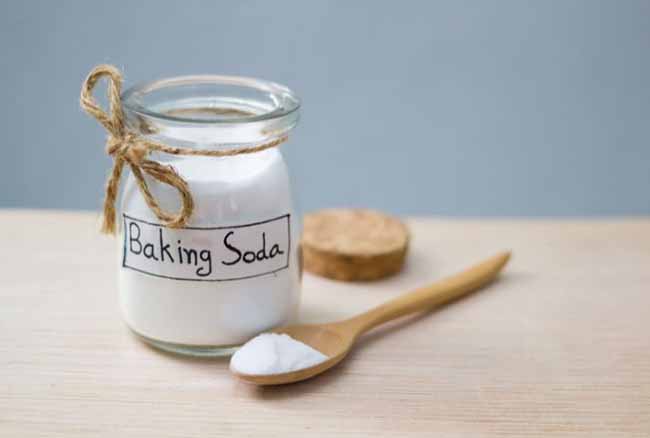
Step 1: Make the Baking Soda Solution
Combine ¼ cup of baking soda with 4 cups of warm water. Stir until the baking soda dissolves completely. Pour the mixture into your bottle and fill it to the top.
Pro Tip: If you have the leftover solution, soak your reusable straw, bottle lid, or other accessories in it to clean them too!
Step 2: Let It Work Overnight
Allow the baking soda solution to sit in the bottle overnight. This gives it time to break down any residue, remove odors, and sanitize the inside thoroughly.
Step 3: Scrub Stubborn Spots
The next day, pour out the solution and get a bottle of brush, toothbrush, or sponge to scrub the interior. Focus on areas like the rim’s bottom part, where buildup tends to hide.
Step 4: Rinse and Dry
Rinse the bottle and accessories with warm water to remove any leftover baking soda. Dry everything completely using a clean towel or let it air dry with the lid off.
4. Using Dishwasher
Dishwashers always save you time, ensure thorough cleaning, and eliminate bacteria and odors. But not all bottles are dishwasher-friendly, so you need to handle the process carefully.
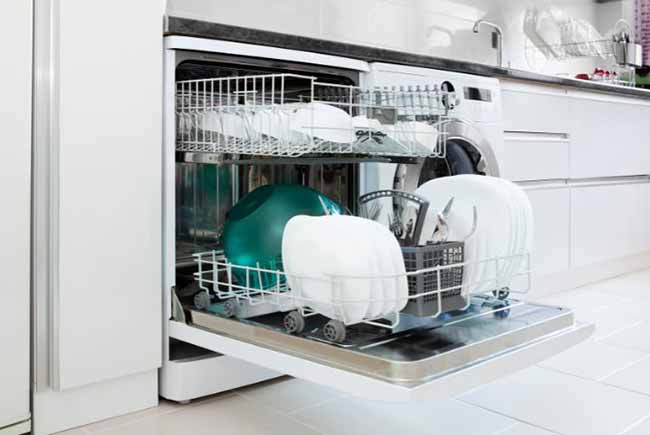
Step 1: Check for the Dishwasher-Safe Symbol
Before you toss your bottle into the dishwasher, confirm it’s safe to do so. Look for one of these common icons:
- A square with a cup and fork inside.
- A square with a wine glass and water droplets inside.
What If You’re Unsure? If you don’t see the symbol, check the manufacturer’s website to verify whether your bottle and accessories can handle the dishwasher.
Step 2: Separate and Load the Bottle
Take off the lid, remove any straws or additional accessories, and arrange all the parts on the top rack of your dishwasher. The top rack keeps the bottle safe from the intense heat of the drying element located on the bottom rack.
Tip: If you have a straw brush, use it to pre-clean straws before placing them in the dishwasher for extra hygiene.
3. Run the Dishwasher
Add your regular detergent and run a normal cycle with the bottle and its parts securely placed on the top rack. For best results, select the drying cycle to ensure the bottle comes out completely dry.
5. Using Denatured Tablets
Denture tablets contain powerful ingredients like peroxide-based bleach, baking soda, and soda ash, which work together to remove stains, eliminate odors, and remove germs. It’s a hands-off solution for a sparkling clean bottle.

Step 1: Prep Your Bottle
Fill your water bottle with clean water (leave some room at the top). Drop one denture tablet into the bottle and watch it fizz as it starts to dissolve. If you need to clean the lid, straw, or any other accessories, fill a bowl with water, add another tablet, and place the accessories inside to soak.
Step 2: Let It Sit
Give the tablet around 30 minutes to fully dissolve and do its magic. Check the instructions on the tablet package for any specific timing recommendations.
Step 3: Scrub Any Remaining Build-Up
Once the tablet has dissolved, pour out the solution. Grab a bottle brush, toothbrush, or sponge to clean the interior of the bottle thoroughly. Focus on any small gaps where residue can hide.
Step 4: Rinse and Dry
Rinse your bottle and accessories with clean, warm water to remove any leftover cleaning solution. Dry everything completely with a clean dish towel or paper towel.
FAQs
How To Wash A Water Bottle Without A Brush?
If you don’t have a bottle brush or the bottle shape is too irregular to use a brush, you can use rice to clean your water bottle. Simply add half a cup of water, a tablespoon of uncooked rice, and a small squirt of dish soap. Close the lid tightly and shake the bottle. The rice will help scrub away any buildup inside.
Does Salt Help Clean Water Bottles?
Yes, it does. To proceed with this, fill a large pot with hot water and add some salt and baking soda. Stir the mixture well, then soak the bottles in the solution for about 10 minutes. After soaking, use dish soap and a bottle brush to scrub away any residue.
Last Words
Hopefully, you don’t have any questions regarding how to clean plastic water bottles. Regular washing using dish soap, baking soda, denture tablets, or even a dishwasher can help remove germs and buildup. Always rinse properly and dry properly to prevent bacteria growth.

